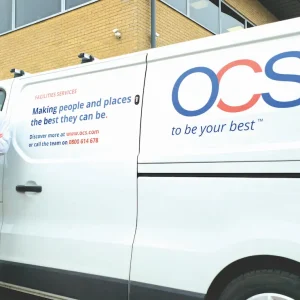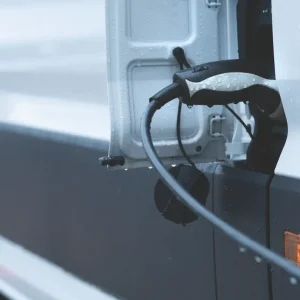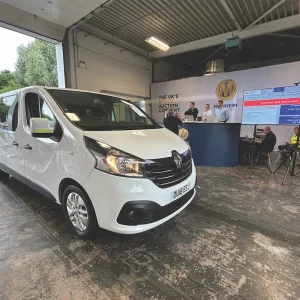The Nissan Navara fought off stiff competition to scoop the 2017 What Van? Pick-up of the Year award.
In winning the prize the Navara overcame the challenges of Mitsubishi with the L200, Ford with the Ranger, Volkswagen with the Amarok, Toyota with the Hilux, as well as a sector debut from Fiat Professional with its L200-based Fullback.
Also vying for attention is Ssangyong, with its new truck – the Musso – while Isuzu has this year made the sector even more competitive with the launch of its latest D-max range, which, like the Hilux and the Ranger, is available in single, extended and double-cab formats whereas the Navara comes just as a King-cab (extended-cab) and double-cab. As yet Nissan has no plans to introduce a single-cab but suggests it could add one to its product line if customer demand increased.
Intriguingly, to keep hold of its position at the top of the pile, Nissan will, from the final quarter of 2017, have to fend off the fresh challenges of a pair of debut models based on the Navara itself – the Renault Alaskan and the Mercedes-Benz X-class.
But the fact that other brands are choosing to base their models on the Navara is, alongside winning the coveted What Van? award, an endorsement of its quality. As Iker Lazzari, Nissan’s fleet sales director, says: “Coming from a well-respected industry title, What Van?’s Pick-up of the Year Award is a great accolade for the Navara and Nissan is very proud to be the recipient of this award. The award speaks for itself and from a marketing perspective it’s great to be able to reference it at every available opportunity.”

ABOVE: Iker Lazzari: ‘Navara offers class-leading equipment and value for money’
In the UK lifestyle models dominate the pick-up market and of the five Navara trim levels on offer the flagship Tekna accounts for more than four out of five sales, according to Lazzari.
He adds, however, that the truck’s in-car comfort, which is derived from Nissan’s SUV pedigree, combined with its rugged load-carrying ability means that it appeals to both SMEs and large operator fleets.
VW’s Amarok has raised the bar in terms of pick-up truck luxury and the Mercedes X-Class will be targeted firmly at the high end of the market too, so is there a danger the Navara could be crowded out? Lazzari doesn’t think so, arguing that the Tekna’s popularity shows how well suited it is to lifestyle customers.
“We welcome competition from other models and are confident the Navara’s talents will ensure it remains competitive in its sector,” he says. Lazzari prefers not to speculate on how Renault and Mercedes will promote their Navara-based products but claims the Nissan model “will continue to offer class-leading levels of equipment and value for money for its sector”.
Electric avenues
With the prominence of its plug-in light van, the E-NV200, Nissan looks to be well placed to capitalise on the accelerating swing towards electric vehicles. Lazzari claims E-NV200 sales were up 17% in the first eight months of the year and is confident the brand’s investment in EV technology will ensure it remains the market leader.
He is not too concerned that the charging infrastructure is not yet in place to meet the anticipated surge in demand because he argues that most EV users charge their vans at home or at work, rather than at public charging points.
He also predicts greater use of vehicle-to-grid technologies in the future to help the UK’s electricity supply work more efficiently by allowing EVs to take electricity from the grid when demand is low and return it when demand increases.
“EV infrastructure is growing rapidly and we will see a further shift in charging patterns with the arrival of vehicle-to-grid technologies in the coming years,” claims Lazzari. “For now, there are over 12,000 public charge points in the UK and we welcome any advances in infrastructure that enhance awareness and adoption of electric vehicles.”

ABOVE: E-NV200: The UK’s top selling electric van
Nissan’s alliance partner Renault has recently revealed a plug-in version of its large van the Master, upon which the Nissan NV400 is based. Lazzari, however, would not be drawn on whether the brand would introduce an electric NV400, insisting the company does not comment on its future product plans.
Another Renault-derived product is the Trafic-based NV300 medium van and Lazzari credits the introduction of the long-awaited successor to the Primastar in December 2016 as finally giving Nissan a credible competitor in the largest segment of the market.
So with such a comprehensive line-up is Nissan poised to punch its weight in the light commercial market at last? Lazzari thinks so: “Nissan has a really strong LCV line-up and is now positioned perfectly to meet the needs of companies large and small, whatever size of vehicle they’re after,” he claims.
“Add to that our market leading five-year/100,000-mile warranty, and our electric vehicle expertise with the market-leading e-NV200, and we have an added advantage over other manufacturers in offering a true one-stop shop for all light commercial vehicle requirements.”
Star trek enterprise
In August Nissan launched a special edition version of its Navara pick-up based on the top of the range Tekna.
With a price tag of £28,052 excluding VAT, Nissan is limiting the Trek-1° to a production run of 400 examples.
The name Trek-1° derives from the geographical location of the Navarre desert in northern Spain, at -1° longitude. The model is powered by the 190hp version of the Navara’s 2.3-litre dCi diesel engine, which offers official fuel economy figures of 44.9 mpg for the six-speed manual transmission and 40.1mpg for the seven-speed automatic.

ABOVE: The Navara benefits from Nissan’s SUV pegigree
Styling features include bed-mounted styling bars with LED spot lamps, side styling bars and Trek-1° decals. It also gets exclusive black 18-inch alloy wheels and a new load bed cover hinged at the end nearest the cab and operated by gas struts at either side.
Beneath the cover is a load bed divider and liner, which keeps loads secure during transportation. It’s fitted into the load bed’s C-channel restraint system, allowing it to slide forwards and backwards for ease of access and loading.





